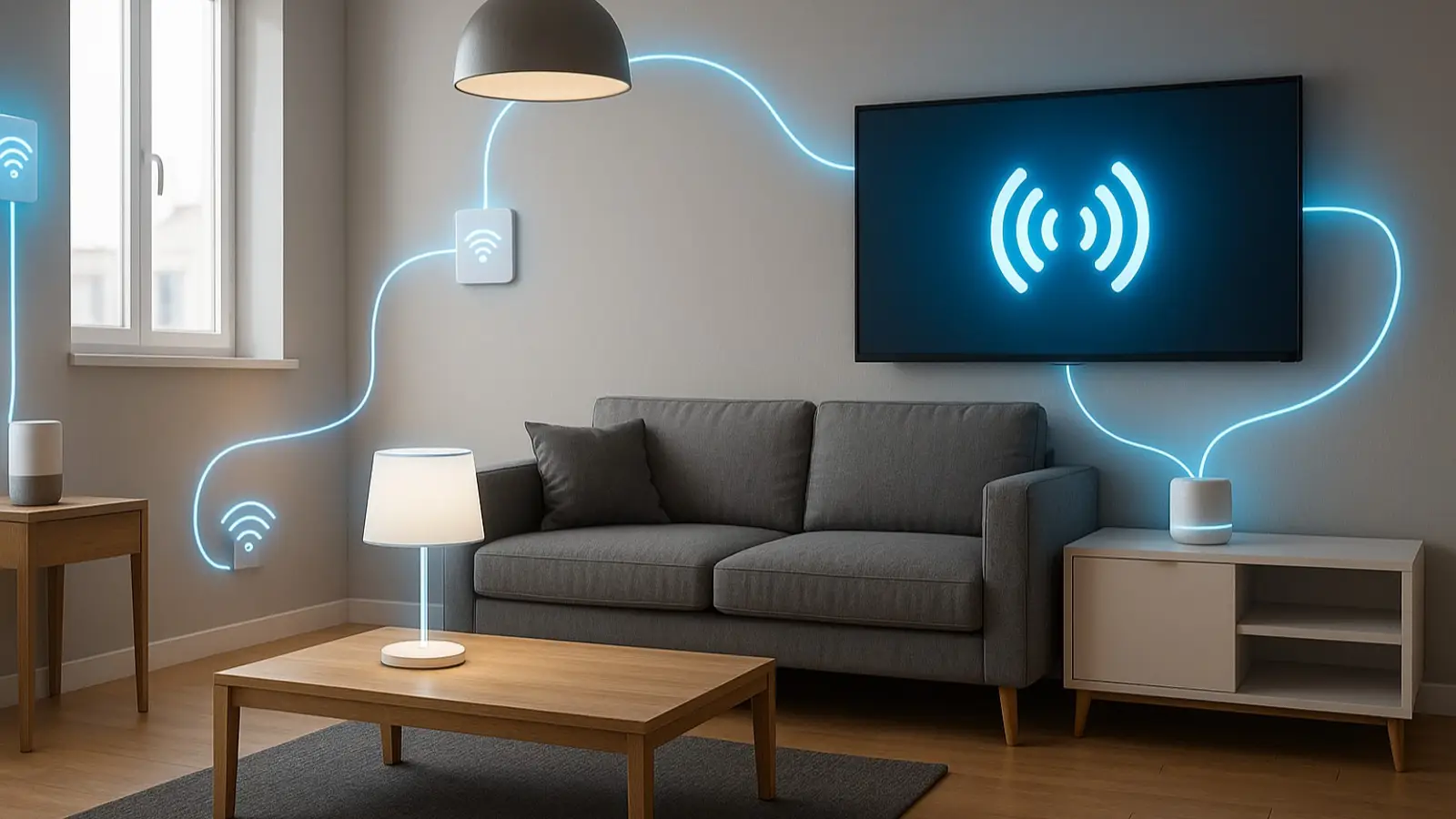https://boda.su/en/posts/id861-wireless-electricity-explained-myths-benefits-and-real-limits
Wireless Electricity Explained: Myths, Benefits, and Real Limits
What You Need to Know About Wireless Electricity and Smart Power Systems
Wireless Electricity Explained: Myths, Benefits, and Real Limits
Discover how wireless electricity works, its real-world advantages, hidden drawbacks, and why true cable-free power remains a futuristic dream for now.
2025-10-17T09:11:53+03:00
2025-10-17T09:11:53+03:00
2025-10-17T09:11:53+03:00
What Is Wireless Electricity?
In recent years, construction and renovation companies have been actively promoting the idea of wireless electricity. Advertisements promise a future with no cables—lights controlled by a smartphone or voice commands, and outlets that work without wires.
But in reality, »wireless electricity” usually refers to a combination of three main technologies:
Airborne power transfer, similar to how wireless chargers work for smartphones;
Radio-controlled switches and outlets, a common feature in smart home systems;
Battery- or rechargeable-powered LED lights.
A complete break from wires doesn’t exist yet. Even »smart” lighting still relies on hidden wiring for power, while true energy transfer through the air remains too weak for household appliances.
The Advantages of Modern Systems
Wireless electrical setups come with a few notable benefits:
Aesthetic appeal. No dangling cables means cleaner, more elegant interiors—particularly noticeable in smart homes.
Flexibility. Lighting fixtures can be moved or new outlets added without drilling into walls.
Safety. There’s less risk of accidentally damaging wiring during renovations.
The Hidden Drawbacks
Still, there are several limitations that tend to be glossed over:
High cost. Wireless switches or sockets can cost several times more than traditional ones.
Battery dependency. Lamps powered by batteries or built-in cells need regular recharging.
Limited power. These systems are suitable for LEDs and small electronics, but not for power-hungry devices like kettles or washing machines.
Reliability issues. Radio signals or Wi-Fi can drop out, and batteries often die at the worst possible moment.
Breakthrough or Marketing Trick?
For now, true wireless electricity remains more of a marketing concept than a household reality. The technology works well for selected components—smart switches, sensors, and accent lighting—but not for full-scale energy supply.
Experiments in Japan and South Korea are exploring energy transfer via Wi-Fi, yet the range is short and energy losses are significant. For those who enjoy high-tech comfort and don’t mind paying extra, wireless lighting and controls can be a stylish convenience. But when it comes to dependable, efficient power, traditional wired systems still lead the way.
Wireless Electricity, Smart Home, Wireless Power, Radio-Controlled Switches, LED Lamps, Energy Transfer, Wireless Charging, Smart Lighting, Home Technology
2025
articles
What You Need to Know About Wireless Electricity and Smart Power Systems
Discover how wireless electricity works, its real-world advantages, hidden drawbacks, and why true cable-free power remains a futuristic dream for now.
Generated by Dall-e
What Is Wireless Electricity?
In recent years, construction and renovation companies have been actively promoting the idea of wireless electricity. Advertisements promise a future with no cables—lights controlled by a smartphone or voice commands, and outlets that work without wires.
But in reality, “wireless electricity” usually refers to a combination of three main technologies:
- Airborne power transfer, similar to how wireless chargers work for smartphones;
- Radio-controlled switches and outlets, a common feature in smart home systems;
- Battery- or rechargeable-powered LED lights.
A complete break from wires doesn’t exist yet. Even “smart” lighting still relies on hidden wiring for power, while true energy transfer through the air remains too weak for household appliances.
The Advantages of Modern Systems
Wireless electrical setups come with a few notable benefits:
- Aesthetic appeal. No dangling cables means cleaner, more elegant interiors—particularly noticeable in smart homes.
- Flexibility. Lighting fixtures can be moved or new outlets added without drilling into walls.
- Safety. There’s less risk of accidentally damaging wiring during renovations.
The Hidden Drawbacks
Still, there are several limitations that tend to be glossed over:
- High cost. Wireless switches or sockets can cost several times more than traditional ones.
- Battery dependency. Lamps powered by batteries or built-in cells need regular recharging.
- Limited power. These systems are suitable for LEDs and small electronics, but not for power-hungry devices like kettles or washing machines.
- Reliability issues. Radio signals or Wi-Fi can drop out, and batteries often die at the worst possible moment.
Breakthrough or Marketing Trick?
For now, true wireless electricity remains more of a marketing concept than a household reality. The technology works well for selected components—smart switches, sensors, and accent lighting—but not for full-scale energy supply.
Experiments in Japan and South Korea are exploring energy transfer via Wi-Fi, yet the range is short and energy losses are significant. For those who enjoy high-tech comfort and don’t mind paying extra, wireless lighting and controls can be a stylish convenience. But when it comes to dependable, efficient power, traditional wired systems still lead the way.

